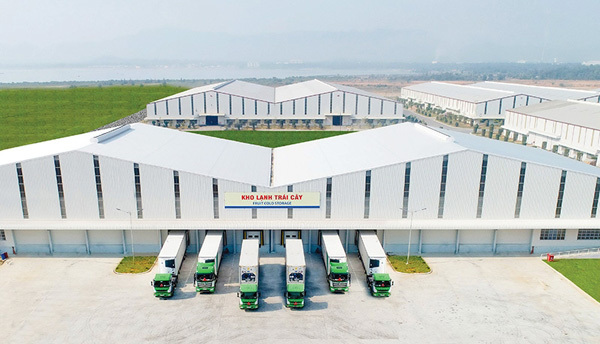Promoting the cold storage market to optimize the strengths of agricultural products
Chủ nhật, 31/10/2021
Cold storage plays an important role in the value chain of agricultural products. However, this potential market has not been properly invested and has not brought into full play and promote the strengths of Vietnamese agricultural products.
Cold storage plays an important role in the value chain of agricultural products. However, this potential market has not been properly invested and has not brought into full play and promote the strengths of Vietnamese agricultural products.

The cold storage market is considered to be in insufficient supply and demand
Supply is not enough in demand
With the advantages of climate and soil, Vietnamese agricultural products are highly evaluated and are one of the key export products. According to information from the Ministry of Industry and Trade, in the first 9 months of 2021, the export turnover of agricultural and aquatic products is estimated at 35.5 billion USD which is an increase of 17.7% over the same period. In which, agricultural products reached 15.8 billion USD, which rises by 14.4%.
Not only many advantages but also disadvantages are available. In fact, in the supply chain of agricultural products, preservation is a link that is both weak and lacking. According to statistics, up to now, the country has about 50 cold storages operating with a capacity of over 700,000 pallets. In which, the South region has 38 cold storages with a capacity of over 618,000 pallets; Central region has 1 cold storage, capacity 21,000 pallets; The North region has 11 cold storages with a capacity of 54,780 pallets. Currently, a number of cold storage facilities are under construction and completion and are expected to be put into operation in 2022.
However, the general opinion is that supply is not enough in demand. In addition, cold storages are mainly for the export of agricultural, forestry and fishery products. The proportion of products destined for the domestic market that have access to cold storage services is only a modest 8.7%.
The lack of cold storage infrastructure poses many difficulties for the supply chain, namely large loss of goods and imbalance of supply and demand. According to statistics of the Ministry of Agriculture and Rural Development, the loss rate of vegetables and fruits in our country ranges from 10-50%. Food loss is about 10-15%.
In addition, due to poor preservation, goods cannot be reached to many places, causing an imbalance between supply and demand. The problem is even more apparent during the recent COVID-19 outbreak. Many localities were confused in storing goods when logistics and cold storage infrastructure could not meet demand, causing a large amount of agricultural products to be discarded when they were just harvested.
Perfect the ecosystem
The prevention and control of the COVID-19 epidemic has performed well in many areas and is ready to enter the new normal that promises a market recovery. Market reports also predict that Southeast Asia will be a "hot" development area in the global cold supply chain in the coming time, with an average valuation growth of 12.5%/year.
Recently, the Ministry of Agriculture and Rural Development opened a consultation conference "Project on building a standard agricultural and forestry material area for domestic consumption and export in the 2021-2025 period". According to the published content, the total cost of implementing the project is about VND 1,600 billion, focusing on building five concentrated raw material areas from North to South with a total area of over 158,300 hectares.
One of the important contents of the project is to invest in building a synchronous logistics and infrastructure system and cold storage for key raw material areas. In addition, promoting training activities and skills training on preliminary processing and post-harvest preservation in order to meet the increasing standards of the domestic and export markets.
This is considered the right direction, creating a foundation for businesses and suppliers to boldly invest more methodically in agricultural and forestry production on an industrial scale. At the same time, it will solve the situation of small, fragmented and lack of standard production that has existed for a long time.
In addition, according to experts , besides the large-scale programs of the Government, it is necessary to add preferential policies, support and specific mechanisms to encourage the private sector to invest more in logistics and cold storage activities. Only in this way can we effectively exploit the potential of the market.
Ha Tran